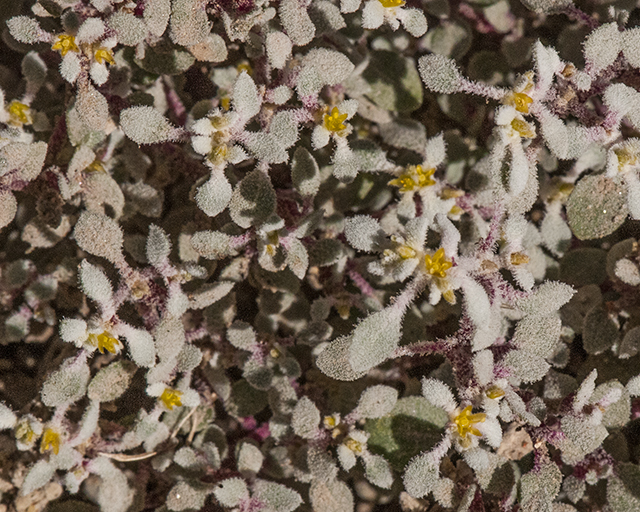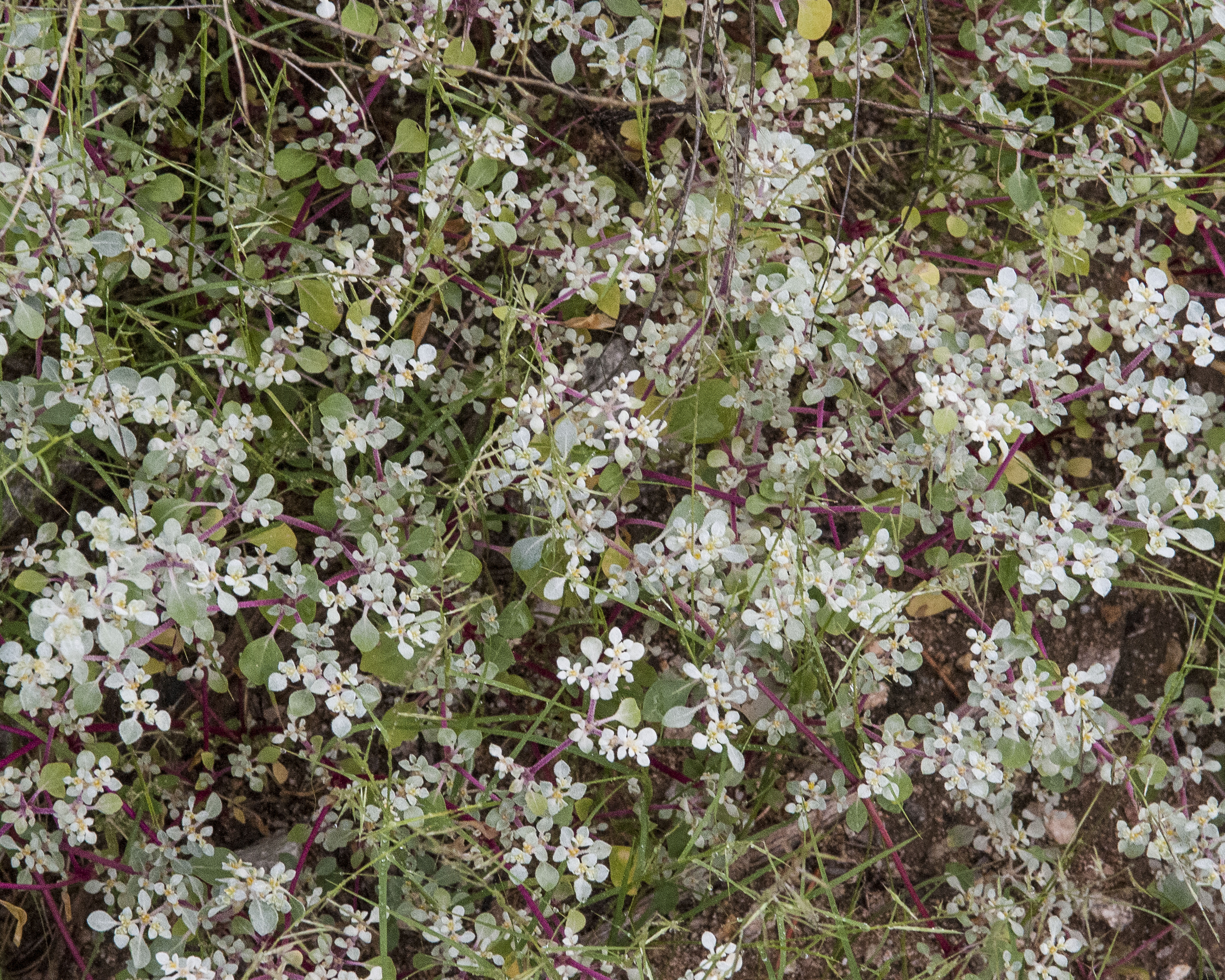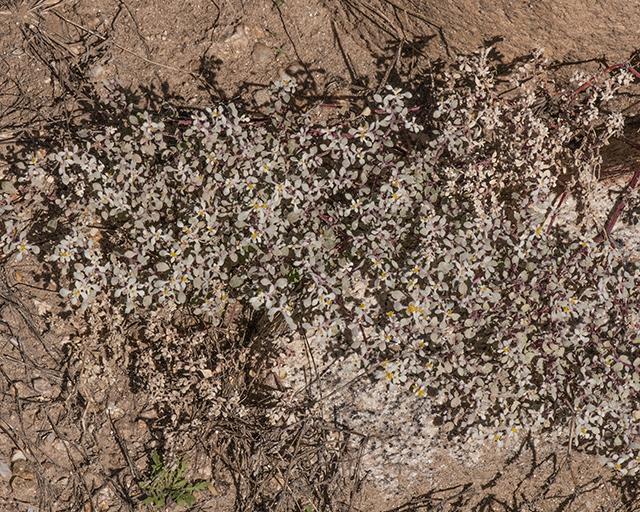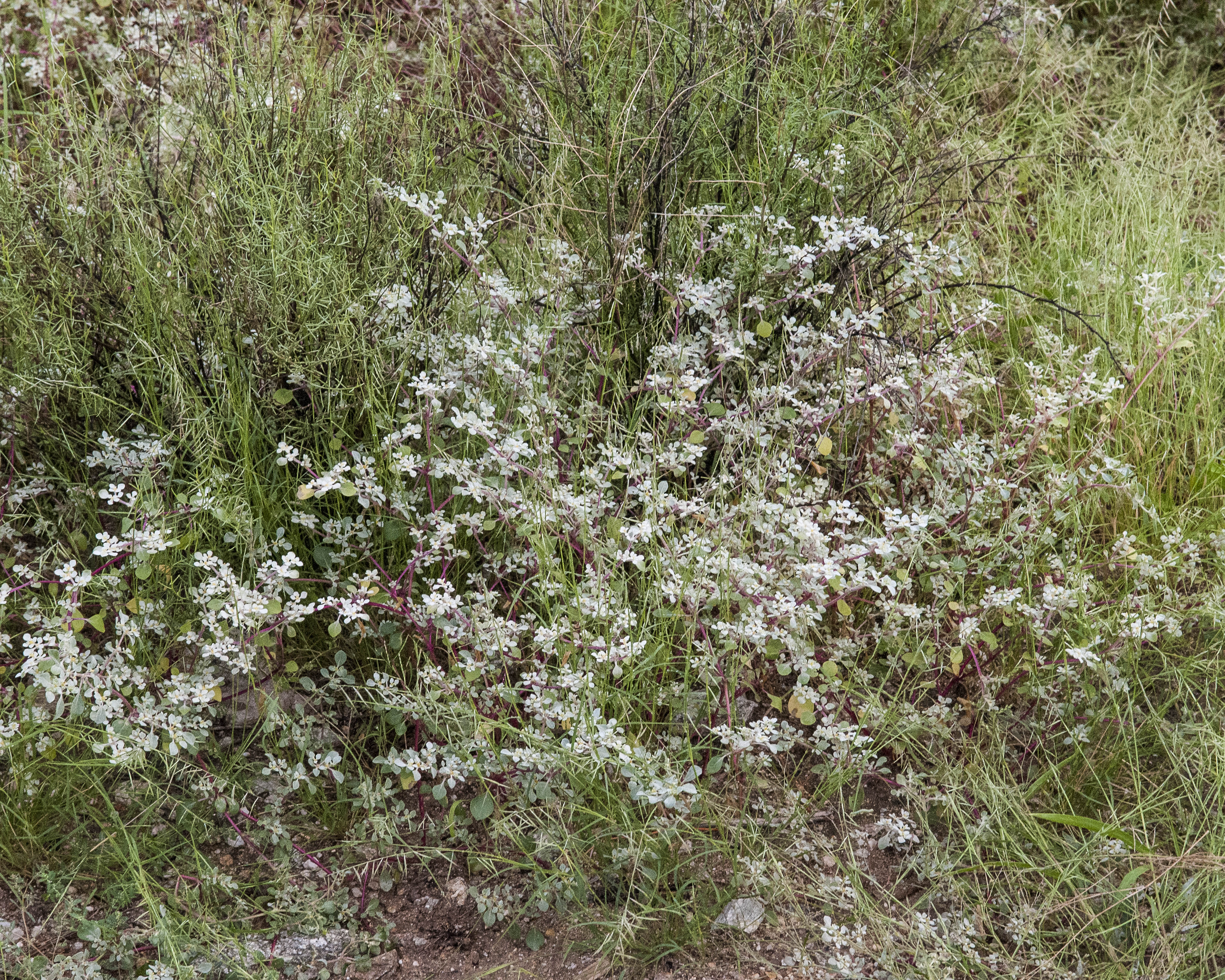Wildflowers of Southern Arizona
Honeymat.
Tidestromia lanuginosa.
Amaranth(Amaranthaceae) family.
Duration: Annual. Nativity: Native. Lifeform: Forb/Herb. General: Procumbent, ascending, or prostrate but much branched annual, yellowish green to gray-green or reddish, to 50 cm, densely rough pubescent to glabrate with age. Leaves: Opposite and petiolate, on petioles 2.5 cm long; leaves ovate-orbicular to lanceolate 1-3 cm long, densely pubescent. Flowers: Minute and perfect in axillary glomerules; perianth yellow, 1.5-3 mm long, the segments oblong, acute to obtuse, glabrous or villous; 5 stamens, filaments united at base; ovary globose, stigma capitate or 2 lobed. Fruits: Utricle subglobose, glabrous, indehiscent, seeds globose, brown-red. Ecology: Found on dry plains, hillsides, and often on disturbed soils; below 5,000 ft (1524 m); flowers August-October. Distribution: CA to the plains states; south to c MEX and the West Indies. Notes: Distinguished by being an ascending-prostrate annual, often with reddish-pinkish stems, gray-green leaves which are usually covered in a thick mat of white, woolly hairs, hence the specific epithet -lanuginosa- (occasionally hair-less), and small yellow flowers. Ethnobotany: The Mayo brewed a tea from the leaves to alleviate the pain of ant bites. Also taken to help cure measles in children. Etymology: Tidestromia is named for the American botanist Ivar (Frederick) Tidestrom (1864-1956) who wrote the Flora of Arizona and New Mexico, while lanuginosa means woolly or downy.
Santa Catalina Mountains.
Sabino Canyon
Location: Edge of circular turnaround near first bridge below dam.
11/7/18
Notes: 8/12/21 Sabino Canyon beside Bear Canyon Trail after abundant monsoon rains
See SEINet Pictures and Description
See FireFly Forest Pictures and Description



 8/12/21
8/12/21

 8/12/21
8/12/21
